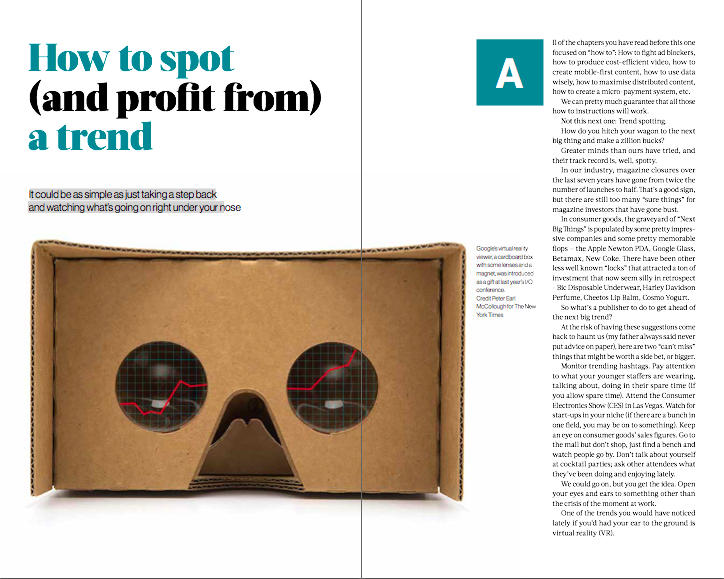
02 Dec How to spot (and profit from) a trend
It could be as simple as just taking a step back and watching what’s going on right under your nose
All of the chapters you have read before this one focused on “how to”: How to fight ad blockers, how to produce cost-efficient video, how to create mobile-first content, how to use data wisely, how to maximise distributed content, how to create a micro-payment system, etc.
We can pretty much guarantee that all those how to instructions will work.
Not this next one: Trend spotting.
How do you hitch your wagon to the next big thing and make a zillion bucks?
Greater minds than ours have tried, and their track record is, well, spotty.
In our industry, magazine closures over the last seven years have gone from twice the number of launches to half. That’s a good sign, but there are still too many “sure things” for magazine investors that have gone bust.
In consumer goods, the graveyard of “Next Big Things” is populated by some pretty impressive companies and some pretty memorable flops — the Apple Newton PDA, Google Glass, Betamax, New Coke. There have been other less well known “locks” that attracted a ton of investment that now seem silly in retrospect – Bic Disposable Underwear, Harley Davidson Perfume, Cheetos Lip Balm, Cosmo Yogurt.
So what’s a publisher to do to get ahead of the next big trend?
At the risk of having these suggestions come back to haunt us (my father always said never put advice on paper), here are two “can’t miss” things that might be worth a side bet, or bigger.
Monitor trending hashtags. Pay attention to what your younger staffers are wearing, talking about, doing in their spare time (if you allow spare time). Attend the Consumer Electronics Show (CES) in Las Vegas. Watch for start-ups in your niche (if there are a bunch in one field, you may be on to something). Keep an eye on consumer goods’ sales figures. Go to the mall but don’t shop, just find a bench and watch people go by. Don’t talk about yourself at cocktail parties; ask other attendees what they’ve been doing and enjoying lately.
We could go on, but you get the idea. Open your eyes and ears to something other than the crisis of the moment at work.
One of the trends you would have noticed lately if you’d had your ear to the ground is virtual reality (VR).
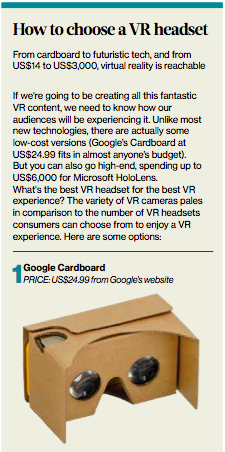
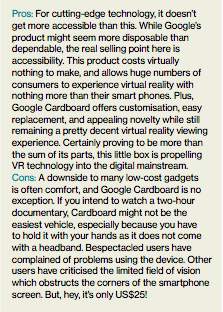
The not-so-new new “thing”
Yeah, we know virtual reality has been around for a while — under-delivering since 1968, believe it or not! But with the early 2016 launch of the Oculus Rift (purchased by Face-book for US$2bn in 2014, VR’s time might have finally arrived for publishers. It appears to be a great consumer product at a price that’s not totally out of reach for early adopters (still high at US$599), and it offers an environment that might be gangbusters for advertisers.
There are cheaper VR devices out there: Samsung Gear VR (US$199 and Google Cardboard (US$24.99 including shipping or as low as US$5 on Amazon). But as one reviewer delicately put his review of Google Cardboard: “It kinda sucks”.
Critics can sniff, but the New York Times distributed 1.31 million Google Cardboard devices to home subscribers in November 2015 to use to watch a VR video of the life of three refugee children. It quickly became the NYT’s most successful app launch ever and delivered proof of concept, according to the company.
“Given that the average time spent within the NYT VR app is close to 15 minutes — an unheard of metric for digital media — it is clear that this experience resonated with viewers,” NYT Magazine SVP/advertising and publisher Andy Wright told The Media Briefing.
The 10-minute video followed three refugee children in a camp in Lebanon. Viewers walked with them through fields, sat with them amidst rubble, and ran with them in a mad, chaotic dash to grab aid packages dropped from a plane while other desperate refugees ran past them in a panic.
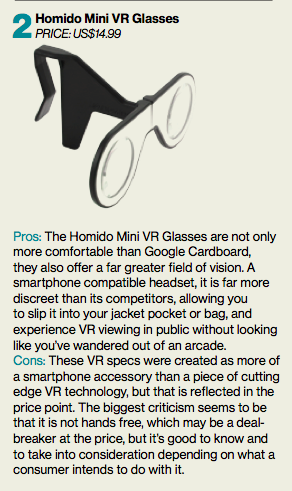
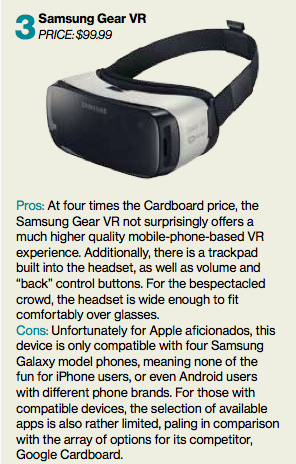
The brilliant video aside, the real brilliance was to put more than a million free entry- level VR devices into the hands of more than a million people. “People understood the concept, were intrigued and excited by it, tried it out and enjoyed it enough that they kept it in their homes,” NYT CEO Mark Thompson told Beet.tv.
“We hope people see this as the moment when VR went mainstream,” New York Times Magazine editor Jake Silverstein told The Media Briefing. “Not when early-adopters, gamers, people who already know got it, but when those without exposure to it realised what this new medium can do.”
Officials from The Times also pointed out that the project was sponsored by GE and vehicle manufacturer Mini, whose branded content was part of the app experience. The NYT also used VR to take viewers through the streets of Paris after the November terrorist attacks, and released a short VR film in December called “Take Flight” that took viewers through the night sky.
Other media companies pushing VR include Discovery (creating weekly VR content for its VR app), the Associated Press (created its first VR video in November 2015, “Seeking Home: Life Inside the Calais Migrant Camp”, a story about the largest migrant camp in Northern France), and The Wall Street Journal (its first VR video, also in November, was about an American Ballet Theatre principal dancer).
Called the “Godmother of VR”, Emblematic Group CEO Nonny de la Peña has produced some of the best VR work to date, including “Project Syria” (viewers live through a recreated terrorist attack in Aleppo), “Hunger in Los Angeles” (recreating a dramatic medical emergency in a food line), and “Use of Force” (the recreation of the murder of a Mexican immigrant by US Border patrol agents). The popularity of the less-than-perfect quality of the graphics proved that viewers will tolerate below-Hollywood standards if the experience is engaging enough.
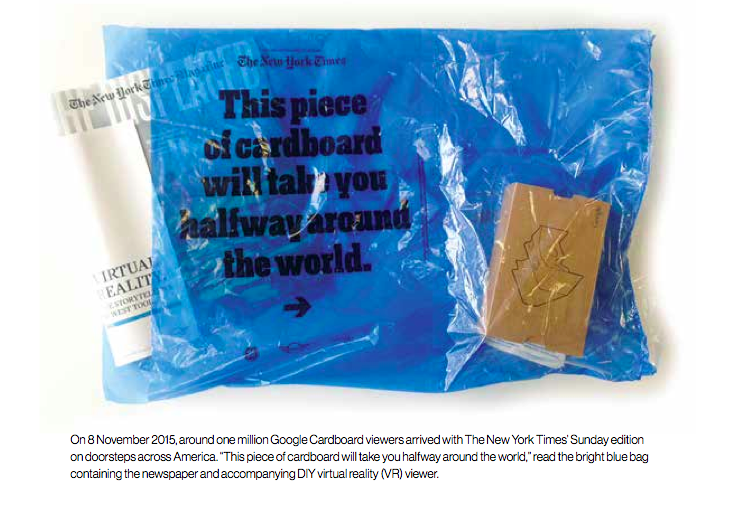
Where to next?
“The challenge right now in VR and breaking news is sensationalism,” Economist business development and innovation vice president Ron Diorio told Digiday. “Everything about VR is hype; the danger is in mistaking the hype for the story.”
Hype or gold? Like any trend spotting situation, the answer comes down to three questions:
1. Is there, or will there soon be, a sufficiently large user base?
2. Can they be monetised?
3. What are the costs of production?
In the United States, the number of years before a quarter of the population adopts a new technology is fast decreasing, according to The Economist and singularity.com. And the time it takes for a new technology to hit a user base of 50 million is also shrinking.
VR consultancy firm KZero is predicting there’ll be more than 40 million active users of VR by 2016. Digi-Capital predicts the VR market will be worth $30billion in 2020. And Statista, being perhaps a bit irrationally exuberant, anticipates a global VR userbase of 171 million by 2018.
So if we have scale, if the market is big enough, can it be monetised?
Well, VR could be the right tool in the right place at the right time. As users, especially young consumers, are looking for more interactivity, as publishers seek a replacement for the failed display ad model, and as brands are looking for a way to engage consumers, along comes VR with its high-impact immersive experience.
As is often the case, the advertisers and brands are ahead of the publishers. British Columbia’s tourism office, Destination B.C., has invested more than half a million US dollars in an Oculus VR video to attract tourists from around the world.
‘You don’t have to simply lean on telling consumers things like, ‘The trees are this big.’ That sense of being there is such a powerful tool,” Destination B.C.’s Janice Greenwood-Fraser told AdWeek. “It brings it to life in a way that no photo or regular video can.’”
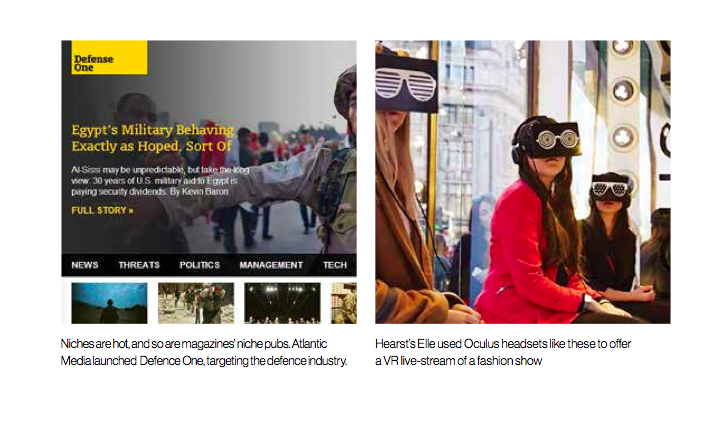
When Oculus offered agencies, brands, and vendors a developer kit back in 2014, more than 100,000 took them up on the offer, including Hearst’s Elle (planning a VR live-stream of a fashion show).
“It’s going into environments that the consumer heretofore never had access,” Kevin O’Malley, senior vice president and publisher of Elle, told AdWeek. “That could be a tiki hut jutting over gentle waters in Polynesia, or it could be front row at a fashion show that they normally only see on TV, where they can see the celebrities who are there. It’s quite another thing to be front row, and when you turn to your left you are sitting next to celebrity X, Y or Z.”
“We are moving quickly on this,” O’Malley said. “Why is that? What do advertisers want most? Engagement with a captive audience. I would say that is a core competency for virtual-reality content.”
The NYT VR experiment and subsequent VR videos are already not just producing some token ad revenue, they’re actually beginning to contribute to the bottom line. “VR is already margin-positive for us. We’re making money out of VR. We expect to make money from VR again in 2016,” Thompson told Beet.TV.
Publishers are also looking at revenue possibilities from branded content. The NYT has produced four branded content VR films and the Wall Street Journal announced it could sell a dozen bespoke VR branded content campaigns in 2016. So, if reader interest is proven and advertisers are on board, it comes down to the cost of equipment and production, right? If so, there’s good news.
Sure, you can spend as much as US$60,000 for one camera (the Nokia Ozo), and some marketing agencies have targeted the cost of a three-minute VR video at as much as US$1m, according to AdWeek.
But perfectly functional cameras or camera rigs can cost from a couple of hundred to three thousand dollars. Here are some:
- Ricoh Theta (US$350)
- V.360 (US$449)
- Giroptic (US$499)
- Bublcam (US$799)
- Six GoPros (US$200-$400 each) with the Freedom 360 GoPro Mount (US$499)
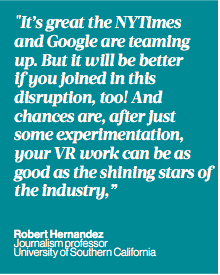
You’ll need software to stitch all the video together. “There are a couple out there, but I’ve been using Kolor’s suite of software,” wrote University of Southern California journalism professor Robert Hernandez on Medium. “That costs money. But you can download it for free to test it out, although videos will have watermarks.
“All together this goes for around $5,000,” Hernandez wrote. “With that, you are ready to take on the big players like the NYTimes. I’m serious. It’s great the NYTimes and Google are teaming up. But it will be better if you joined in this disruption, too!
“And chances are, after just some experimentation, your VR work can be as good as the shining stars of the industry,” wrote Hernandez.
Once you produce your VR videos, you can publish them on platforms ranging from YouTube to VRideo or Kolor Eyes.
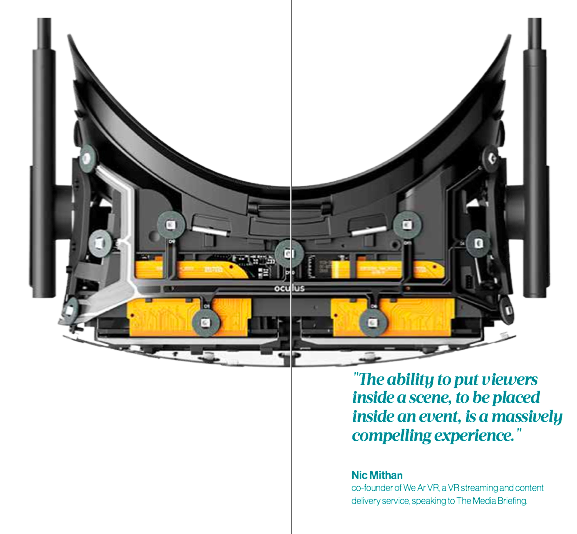
But who on your staff can do this stuff?
Some publishers, in a hurry to get started, have gone to outside VR companies like Jaunt for VR expertise. But others, like Gannett in the US, are training staffers at various publishing sites.
“If somebody goes to Jaunt, they’re spending a lot of money for those third-party relationships,” Mitch Gelman, vice president of product for Gannett Digital, told Digiday. “We’re spending a lot less money, and we’re spreading the capability across now 12 of those markets [where staffers have been trained].” Distribution of VR content should not be a problem, either.
YouTube has added a “cardboard” viewing mode for videos watched on Android devices. And app stores offer VR apps for free or low cast. Basically, if a reader has a relatively new smartphone, they can be a VR consumer.
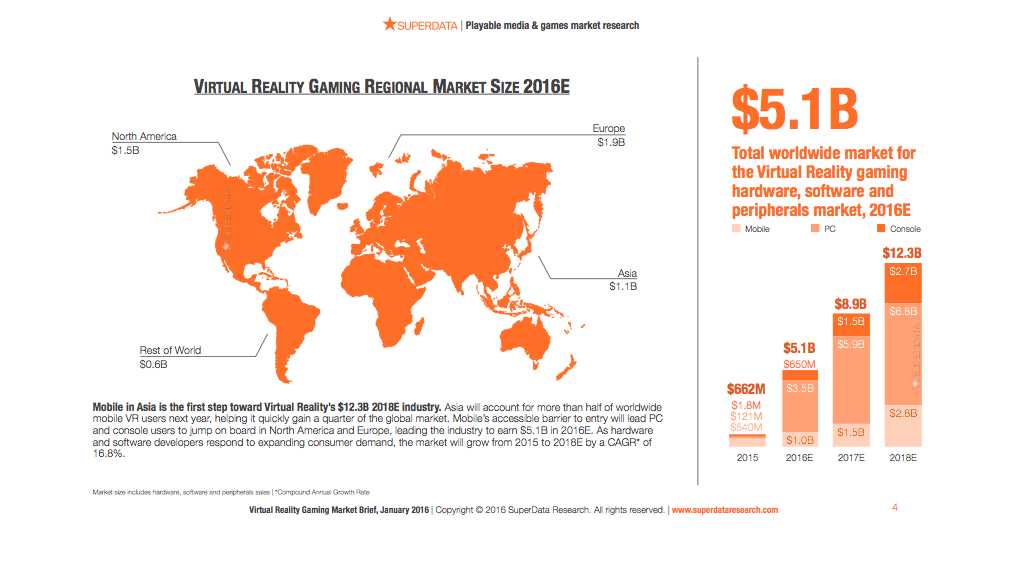
It’s the niche, stupid
Just as VR had been around for decades before only recently becoming a “thing”, niche publishing has been around forever, too.
Lately, however, it is experiencing a renaissance of sorts by providing curated depth delivered to (sometimes rabid, in a good way) communities of shared interest in a time of information overload.
The term “niche publishing” used to be a bit of a pejorative (“Oh, they’re in niche pub- lishing!”). But what was once equated with “small” and “insignificant” can now instead translate into “opportunity” and “profit”.
No publisher has more aggressively adopted the niche strategy than The Boston Globe. In a little over 12 months, the newspaper publisher launched three stand-alone niche sites:
- Crux (all things Catholic Church)
- BetaBoston (all things tech innovation)
- STAT (all things life sciences, health and medicine)

“These are the things for which Boston is known for and what we think we can own,” Boston Globe Media Partners CEO Mike Sheehan told Digiday. “When we go into verticals in which we’re dominant, it expands our overall audience, which helps boost every- thing else. You’re never going to see us start a site focused on consumer packaged goods.”
Atlantic Media also launched niche publications recently: Quartz and Defence One, targeting international business people and the defence industry respectively. And if streaming shows and binge watch- ing isn’t a trend, we don’t know what is. But viewers are often befuddled about what to watch and how to find it. In New York City, that’s not a problem thanks to the niche publication of The New York Post which launched the appropriately titled site Decider.
The folks who successfully brought Politico to Europe last April (they’re at a million uniques a month) knew a niche when they saw one, both last year and in 2007 when they launched Politico in the US.
“Our overall philosophy of publication is that the future is niche as opposed to generalist,” Europe executive editor Matthew Kaminski told Press Gazette. “We prefer to go deeper than wider. And if we go wider we will go deep too… We want to be better than anyone else at politics and policy. That’s all.”
Another great example of hopping on a hot niche is Il Mio Papa, the Mondadori 2014 start-up that hitched its wagon to the global fascination with the new pope. It launched with a press run of three million copies and hasn’t slowed down since. Between the heavily Catholic population in Italy and the 1.2bn Catholics worldwide, Il Mio Papa has an enviable potential circulation base.
The editors feed the pope frenzy on a weekly basis, often treating the pope like a pop star (pull-out pope posters, pope trinkets, and bookings for trips to the Vatican). But the editors try to keep it on the serious side with profiles of saints and serious examinations of the pope’s pronouncements.
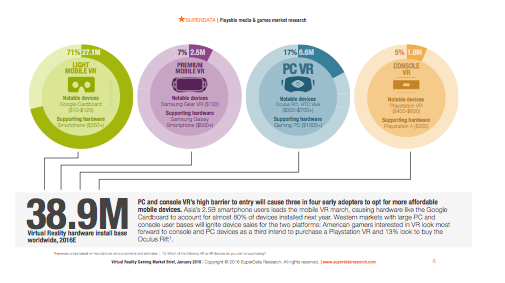
Not everyone can do a Pope-azine
So what niche can you profit from if the pope doesn’t live in your backyard?
Look at some of the magazines launched in 2015 in the US, and you’ll see a pattern of identifying what’s hot and jumping on it:
2015:
- Marijuana Ventures: How to grow, market and sell pot
- Ballistic: Firearms and survival lifestyles
- Mornings with Jesus: Picking up on the growing religious fervour in the US
- Roadkill: So-called Automotive Chaos Theory fixing up old cars and hitting the road
- Sip: Riding the coattails of the fascination with exotic cocktails
- Cool Tech: C/Net goes from digital-only to print
- Do: Crafts, colouring and gift-making in a meditative way
- Eat This Not That: Healthy consumption through black-and-white decisions
2014:
- Craft Beer & Brewing Magazine: Taking advantage of the craft beer explosion
- Live Happy: Banking on people’s desire to counteract all the bad news with the “sci- ence of positive psychology”
- Modern Pioneer: Feeding the back-to-our- roots passion of people seeking to escape the modern world
- Mud & Obstacle: Elite obstacle course racing has blossomed into a serious fad
- Rescue Me: Feeding the desire of people to save abandoned pets from kill shelters
- Vapor Lives: The popularity of vapour cigarettes drives this consumer magazine along with a partner title for the vapour industry.
So, go get yourself a cheap VR camera, train one of your staff, and shoot some editorial and advertising VR videos. And then put them in your latest niche publication. You’ll be latching on to two hot trends at once.
Good luck!
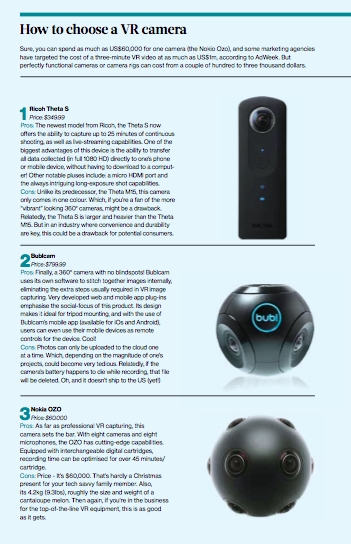
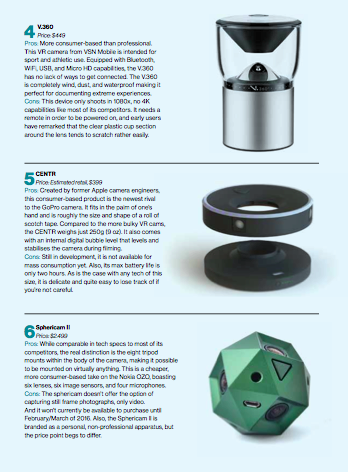

This article is one of many chapters published in our book, Innovations in Magazine Media 2016 World Report.


